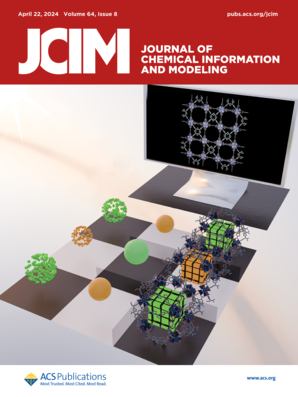结合体外和硅工作流程提供稳健,透明,和上下文严格的生物活性模型。
IF 5.6
2区 化学
Q1 CHEMISTRY, MEDICINAL
引用次数: 0
摘要
新的方法方法(NAMs)在毒理学领域日益受到重视,以填补数据空白,减少化学品安全评估的时间和资源。我们描述了一个集成了体外高通量生物测定与计算机计算模型的NAMs工作流程。在定义此工作流时,我们建议,作为计算机开发的关键步骤,明确“目的上下文”的识别:计算机解决方案的范围和意图的先验定义,为模型的机制解释、验证和输出设计提供自然目标。通过检测血清转运蛋白转甲状腺素(TTR)中荧光探针8-苯胺-1-萘磺酸(ANSA)的位移(TTR是甲状腺素(T4)结合潜在破坏的代理)的体外测定数据,我们与实验人员合作,为该计算机建模工作开发了三个相关目的背景:(1)通过正交信息对体外测定原理进行检验和确认;(2)立即与体外实验周期整合,以降低成本并提高命中率;(3)最终取代单浓度筛选作为大宗化学文库生物活性测试的优先策略。从这些目的背景中,我们推导出一个稳健透明的定量结构-活性关系(QSAR)模型的基础,该模型具有建设性地适合目的,其特点是第一性原理机制分析、严格的数据质量评估、上下文严格的性能测试,最后,提供定量推荐时间表,同时提高体外命中率和计算机模型学习潜力。本文章由计算机程序翻译,如有差异,请以英文原文为准。
Combined In Vitro and In Silico Workflow to Deliver Robust, Transparent, and Contextually Rigorous Models of Bioactivity.
New approach methodologies (NAMs) are an increasing priority in the field of toxicology to fill data gaps and reduce time and resources in chemical safety assessment. We describe an NAMs workflow that integrates an in vitro high-throughput bioassay with an in silico computational model. In defining this workflow, we propose, as a crucial step of in silico development, the identification of explicit "purpose contexts": a priori definitions of the scope and intent of an in silico solution, which provide natural targets for the mechanistic interpretation, validation, and output design of the model. By inspecting data from an in vitro assay measuring the displacement of fluorescent probe 8-anilino-1-naphthalenesulfonic acid (ANSA) from the serum transport protein transthyretin (TTR) as a proxy for potential disruption of thyroxine (T4) binding, in collaboration with the experimenters, we developed three relevant purpose contexts for this in silico modeling effort: (1) examination and confirmation of the in vitro assay principle via orthogonal information, (2) immediate integration with the in vitro experimental cycle to reduce costs and enhance hit rates, and (3) ultimate replacement of the use of single-concentration screening as a prioritization strategy for bioactivity testing of bulk chemical libraries. From these purpose contexts, we derived the foundations of a robust and transparent quantitative structure-activity relationship (QSAR) model that is constructively fit for purpose, characterized by first-principles mechanistic analysis, strict data quality evaluation, contextually rigorous performance testing and, finally, delivery of a quantitative recommendation schedule to simultaneously improve in vitro hit rates and in silico model learning potential.
求助全文
通过发布文献求助,成功后即可免费获取论文全文。
去求助
来源期刊
CiteScore
9.80
自引率
10.70%
发文量
529
审稿时长
1.4 months
期刊介绍:
The Journal of Chemical Information and Modeling publishes papers reporting new methodology and/or important applications in the fields of chemical informatics and molecular modeling. Specific topics include the representation and computer-based searching of chemical databases, molecular modeling, computer-aided molecular design of new materials, catalysts, or ligands, development of new computational methods or efficient algorithms for chemical software, and biopharmaceutical chemistry including analyses of biological activity and other issues related to drug discovery.
Astute chemists, computer scientists, and information specialists look to this monthly’s insightful research studies, programming innovations, and software reviews to keep current with advances in this integral, multidisciplinary field.
As a subscriber you’ll stay abreast of database search systems, use of graph theory in chemical problems, substructure search systems, pattern recognition and clustering, analysis of chemical and physical data, molecular modeling, graphics and natural language interfaces, bibliometric and citation analysis, and synthesis design and reactions databases.

 求助内容:
求助内容: 应助结果提醒方式:
应助结果提醒方式:


